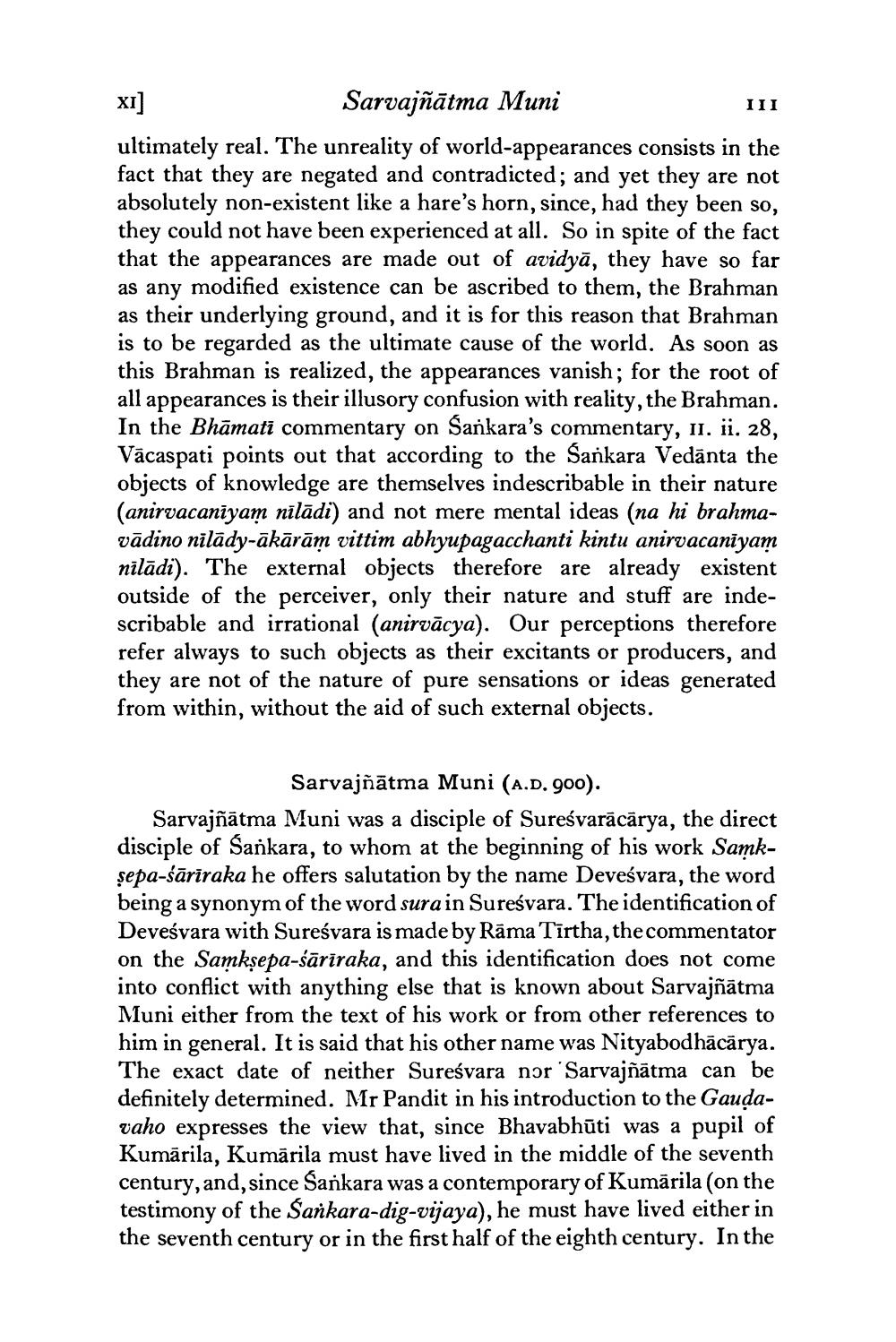________________
XI]
Sarvajñātma Muni ultimately real. The unreality of world-appearances consists in the fact that they are negated and contradicted; and yet they are not absolutely non-existent like a hare's horn, since, had they been so, they could not have been experienced at all. So in spite of the fact that the appearances are made out of avidyā, they have so far as any modified existence can be ascribed to them, the Brahman as their underlying ground, and it is for this reason that Brahman is to be regarded as the ultimate cause of the world. As soon as this Brahman is realized, the appearances vanish; for the root of all appearances is their illusory confusion with reality, the Brahman. In the Bhāmati commentary on Sankara's commentary, 11. ii. 28, Vācaspati points out that according to the Sankara Vedānta the objects of knowledge are themselves indescribable in their nature (anirvacanīyam nīlādi) and not mere mental ideas (na hi brahmavādino nīlādy-ākārām vittim abhyupagacchanti kintu anirvacanīyam nilādi). The external objects therefore are already existent outside of the perceiver, only their nature and stuff are indescribable and irrational (anirvācya). Our perceptions therefore refer always to such objects as their excitants or producers, and they are not of the nature of pure sensations or ideas generate from within, without the aid of such external objects.
Sarvajñātma Muni (A.D. 900). Sarvajñātma Muni was a disciple of Sureśvarācārya, the direct disciple of Sankara, to whom at the beginning of his work Samksepa-śārīraka he offers salutation by the name Deveśvara, the word being a synonym of the word sura in Sureśvara. The identification of Deveśvara with Sureśvara is made by Rāma Tirtha, the commentator on the Samkṣepa-śārīraka, and this identification does not come into conflict with anything else that is known about Sarvajñātma Muni either from the text of his work or from other references to him in general. It is said that his other name was Nityabodhācārya. The exact date of neither Sureśvara nor'Sarvajñātma can be definitely determined. Mr Pandit in his introduction to the Gaudavaho expresses the view that, since Bhavabhūti was a pupil of Kumārila, Kumārila must have lived in the middle of the seventh century, and, since Sankara was a contemporary of Kumārila (on the testimony of the Sankara-dig-vijaya), he must have lived either in the seventh century or in the first half of the eighth century. In the




